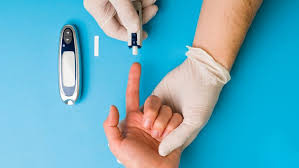Trained healthcare staff prevent glucometer errors in high-risk patients by applying accurate techniques, following strict protocols, recognizing abnormal readings quickly, and knowing how to troubleshoot devices. Their training ensures correct interpretation of results, helping avoid dangerous treatment delays or misdiagnoses.
Understanding the Stakes: Why Glucometer Accuracy Matters
For high-risk patients, even a minor error in blood glucose measurement can have serious consequences. These patients often include those with diabetes, renal issues, sepsis, or other conditions where blood sugar levels fluctuate unpredictably. A single wrong reading can lead to mistreatment—such as inappropriate insulin dosing—putting the patient at risk of hypoglycemia or hyperglycemia.
While glucometers are essential tools in healthcare settings, they aren’t foolproof. Their reliability depends heavily on the person using them. This is where properly trained staff come in.
The Role of Training in Preventing Glucometer Errors
1. Mastering the Basics with Blood Glucose Monitoring Training
Quality Blood Glucose Monitoring Training ensures that staff understand how to correctly use glucometers. This includes knowing:
- How to calibrate devices (if required)
- When and how to clean the equipment
- Which test strips to use and their expiration dates
- How to properly collect blood samples (from fingers, heels, etc.)
These fundamental steps reduce the risk of common errors like:
- Using expired or incompatible strips
- Not cleaning the patient’s skin properly
- Incorrect strip insertion
2. Recognizing and Responding to Outliers
Training helps staff recognize when a glucometer reading doesn’t match the patient’s symptoms. For instance, if a patient appears confused and shaky, but the reading says their sugar level is normal, a trained worker will know to double-check.
In these scenarios, staff may:
- Repeat the test
- Use an alternative site
- Confirm with lab tests
This awareness comes from hands-on education, typically included in high-quality glucometer training.
High-Risk Patient Populations: Special Considerations
Patients with poor circulation, excessive sweating, or edema can produce misleading results if staff are not trained to recognize these issues.
1. Elderly and Chronically Ill Patients
Elderly patients often have thinner skin or compromised circulation. In such cases, staff need to know the correct site and pressure to use. They also must understand the patient’s full medication list, as some drugs can impact blood sugar levels or interfere with readings.
2. Neonates and Pediatric Patients
Blood glucose testing in neonates is especially sensitive. A small calibration error or incorrect site selection can have magnified effects. Staff must be trained to apply age-appropriate techniques to avoid misdiagnosis.
The Importance of Aseptic Technique
Cross-contamination and infection risk are significant concerns when monitoring blood glucose, especially in immunocompromised patients.
Infection control principles taught through wound care and dressing training and tissue viability programs reinforce best practices in:
- Using gloves
- Cleaning the site properly
- Disposing of sharps safely
These skills carry over to blood glucose monitoring and are vital in preventing healthcare-associated infections.
Device-Specific Training: Why One Size Doesn’t Fit All
Not all glucometers function the same. Some require coding before use, others are automatically calibrated. Staff who are trained only on one brand or device may be more prone to error when switching equipment.
Structured programs often include:
- In-depth instruction on different glucometer models
- Simulation-based practice
- Troubleshooting guidance
This cross-device competence is particularly important in care homes, community settings, and hospitals with varied inventories.
Real-World Impact: Case Study Example
Case: A 72-year-old diabetic patient in a residential care facility began showing signs of confusion and dizziness. An untrained carer used a glucometer but didn’t notice the strip was outdated. The reading showed 5.6 mmol/L, which was recorded as normal.
Outcome: The patient collapsed within the hour due to undetected hypoglycemia.
Revised Scenario with Trained Staff:
- The trained staff member checked the strip date first.
- After an initial suspicious reading, they repeated the test with a new strip.
- The second result showed 2.9 mmol/L.
- Emergency glucose was administered, and the patient stabilized.
This example highlights how trained intervention can literally be life-saving.
Interpreting Trends, Not Just Numbers
Effective phlebotomy training courses and glucose monitoring education teach staff not just to record values, but to interpret them in clinical context.
A single blood sugar value can be misleading. But a series of measurements taken over hours can reveal patterns:
- Consistently high morning readings may indicate insufficient nighttime insulin.
- Sudden lows post-lunch may mean a dietary or medication issue.
By understanding these trends, trained caregivers can flag issues early and recommend timely interventions.
Building Confidence Through Ongoing Education
Healthcare evolves rapidly, and so do the tools we use. Staff who receive ongoing training not only maintain their competency but build confidence. This confidence translates into better decision-making, especially under pressure.
Repeat training or annual refreshers ensure:
- Protocols are still being followed
- New staff remain aligned with best practices
- Common mistakes are corrected before they become habits
Summary: Why Training Makes the Difference
Preventing glucometer errors isn’t just about using the device correctly. It’s about understanding the patient, the clinical context, and the tools themselves. Training transforms a basic task into a clinically significant skill.
From recognizing suspicious readings to using the right technique with high-risk groups, trained staff are the frontline defense against avoidable glucose-related errors.
Final Thoughts
In an environment where every second and every measurement counts, training is the key variable we can control. Whether in a hospital, care home, or community setting, well-trained staff don’t just use glucometers—they wield them with precision, confidence, and care.
That’s how errors are prevented. And lives are protected.
Source : https://shreejitraining11.blogspot.com/2025/06/how-trained-staff-prevent-glucometer.html





Comments